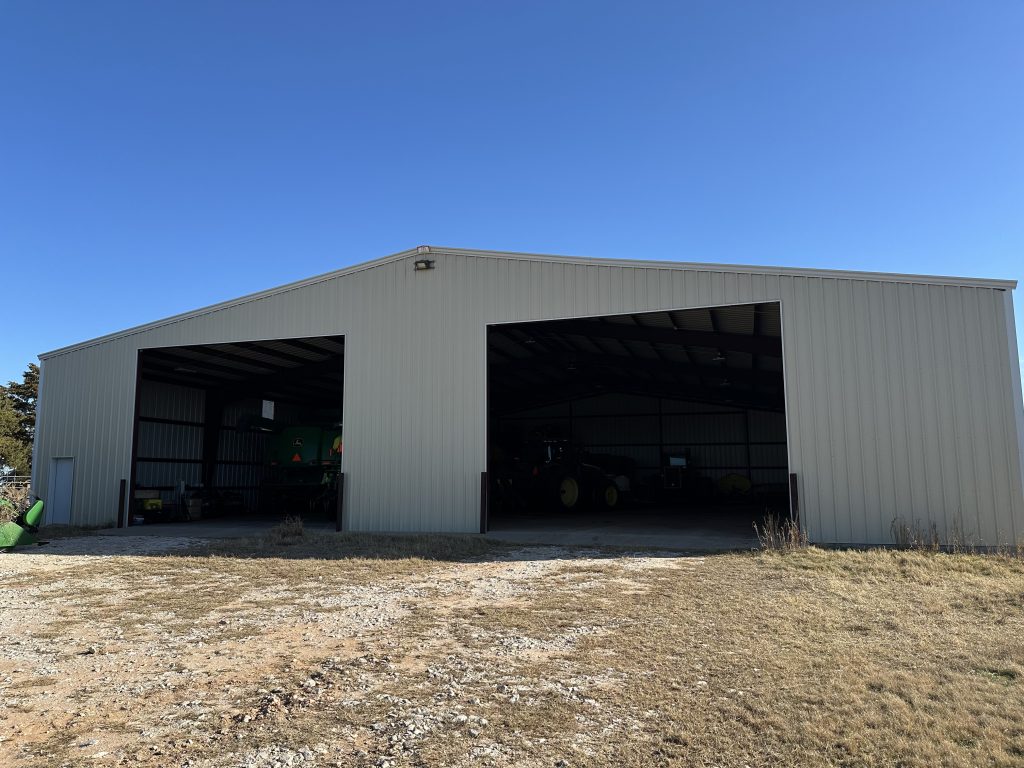The transformation of barns over time

Photo credit: Photo taken in 1933 of the Kandt-Domann farmstead barn in Dickinson County, Kansas. (Photo courtesy Library of Congress.)
Along every rural road there is at least one old barn, either still in use or slowly deteriorating with time. Comparing the old barns to new farm sheds, it is obvious to see that these structures have changed over the last century in terms of size, materials, architecture and purpose.
Len Schamber, president of Schamber Historic Preservation, LLC and member of the Kansas Barn Alliance, said the original barns erected on the homesteads of the High Plains served one main purpose.

“Originally, the vast majority of them were designed for the housing, feeding and care of animals,” Schamber said. “Virtually everything was done by hand, and so the horses, cows, oxen and wagons were placed in the barn. The farm machinery didn’t exist, more or less, so there was no need to have those inside.”
The barn was the foundation of a farm. In fact, it was the first structure to be built, and the family usually lived in the barn with the animals until a house was constructed on a property.
“The barn was every bit as important as the home, and probably to some extent even more so, because that was their livelihood,” Schamber said.
Barns of the past
Schamber said gambrel and straight gable roof barns were commonly built in Kansas and the High Plains. He said round and 16-sided barns could also be found throughout the region. As far as materials, old barns were made of timber, wood siding, stone and other materials.
“A lot of the barns, especially in the eastern part of Kansas, were timber-framed, so they would be put up in stages,” Schamber said. “Each part would be built entirely on the ground and then raised. They were held together with joints and pegs.”

Schamber said the designs and engineering of the original barns were straightforward and simple in terms of columns and support beams. He said most of these barns had a large hay mow because most farmers raised feed and hay for their livestock, and they needed a place to store it.
“About 1920, things became more mechanized, and tractors went from steam engines to gas-powered and diesel-powered,” Schamber said. “The whole thing started to change a lot, and people began to build their barns for different reasons.”
Schamber said many of the historic barns that still exist today are in poor repair or in the process of falling down.
“Barns deteriorated as a result of poor design to begin with, not receiving maintenance or from overuse,” Schamber said. “If the hay mow was designed to hold 20 tons of hay, they might put 20, 30 or even 40 tons in it. In Kansas, from the 1850s until about probably 1950, barns were well-maintained because they were of such vital importance. But after that, as the population continued to dwindle, more people were moving off the farms, and so, consequently, a lot of them fell into disuse.”
Modern barns
Modern barns are built with different purposes in mind. Many have concrete floors, electricity, steel frames, insulation, metal siding and roofs and air conditioning. Most important are the square footage of the building and size of the doors.
Although some vintage barns are large, the door openings are often too tight for equipment to fit through, which has made them useless for storing modern tractors, implements and combines.
“The modern barns are very effective and work great for what they’re designed to be, which can be almost anything,” Schamber said.

Schamber said the old barns that used to be invaluable to farmers have become antiquated in many ways due to the changes in farming, livestock rearing and size of equipment.
“They still have some uses, but they have become obsolete simply by the fact that style is not needed anymore at all,” Schamber said. “Although I think we’re all sad about the demise of these structures, I don’t know how that absolutely could have been avoided.”
The historic barns that are still standing today might not be used for what they were originally intended, but some can still be saved, preserved or repurposed. These structures were vital to the farmers and ranchers that settled the High Plains, and they are integral pieces of agricultural history.
To learn more about barn restoration and grants available in your area, contact your state historical society or state barn alliance organization.
Lacey Vilhauer can be reached at 620-227-1871 or [email protected].




